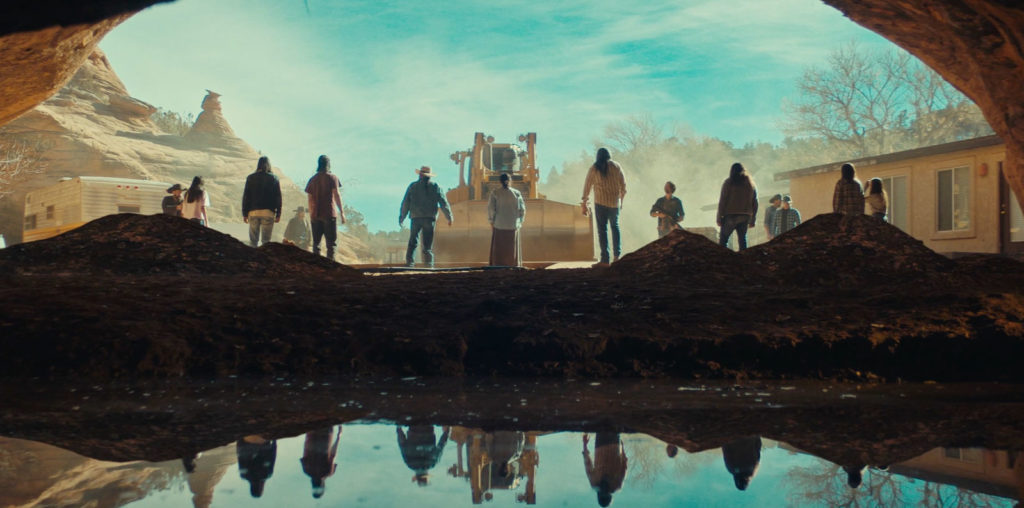
A cook in the Russian army is deployed during the problems in Chechnya. He has to feed an entire army, lest they all get weak and become unable to fight. This is a vital job. The only ingredients he has to work with are sugar, lard, and porridge. The army’s top officers trade the sugar and lard for booze. So the cook kills a cow to feed the men. But, the cow belongs to a local peasant. The Chechnyan peasant complains to the officers, but they’re drunk so they send him away. The man then goes and complains to the rebels whom the Russian army is fighting. The rebels are sympathetic – this man is exactly the sort of person they’re fighting for – so they attack the army that night. Seeing that the rebel attacks have increased, the Russian government sends more men to fight the rebels, but they don’t send any more food. So now, the army is twice as big, and there is still nothing to eat but porridge. The Russians lose.
This is one of a dozen or so similar stories recounted in the documentary “Cooking History,” which screened at the 2009 Chicago International Film Festival. Made up of interviews with the cooks who fed the soldiers fighting the wars, the stories are arranged chronologically from World War II to the present. Thus, the doc presents a history of modern warfare in the past sixty years, told from the perspective of the cooks. These men (and a few women) hail from Romania, Hungary, Poland, Germany, Czech Republic, France, and Algeria.
The stories range from funny to tragic: a jolly Hungarian sausage maker talks of the day his goulash wagon was bombed, while a Romanian man tells us of following his orders to the letter: “don’t feed the civilians, this isn’t their food, and we need to keep the soldiers strong to defend them.” When the cook denies a little girl some food, she dies, and her whole village hates him for it. He seems remorseful, but adds: “if everyone did their own thing, the army would be a shambles.”
The stories are bookended by two different framing motifs. The first is to display recipes in the native language of the interview subject (subtitled, along with the interviews, in English). The recipes are sometimes comically massive, such as “baked veal for 8000 Croatian soldiers,” or “pickled mushrooms for 500,000 Soviet occupiers.” Every single recipe ends with “…and a pinch of salt.” The other framing motif is a bit less whimsical.
Many of the interview subjects are preparing food as they speak, and in at least three cases we see them butchering animals. These slaughters, which are a natural part of human existence, are lensed with unusual and noteworthy brutality. A long shot via a locked-down camera impassively watches as three men whack a cow over the head. The cow doesn’t react much, so they slit the beast’s throat. Blood gushes out, and the animal slowly sinks to its knees, and it eventually dies. There are no changes of camera angle, just a single steady and unhurried shot of this creature’s painful death. A c**k and a pig die the same way; the pig unleashes squeals of primal terror that will put you off of your bacon indefinitely.
One must wonder what the purpose of including such blatantly gory images might be. They seem completely gratuitous and they distract attention from the point of the film (the war stories of the chefs). It’s as if the editor was an animal rights activist whose entire premise in making this movie was to trick people into seeing these disturbing sequences of livestock suffering miserably, in order to generate sympathy for the cause. We also see a woman making sausage. As she speaks she slowly pushes raw meat through a grinder. The director includes lingering close-ups of the raw meat oozing out of the machine into a bowl. It doesn’t look appetizing. Perhaps there is an effort being made to compare the slaughter of these animals to the slaughter of humans in war, but that’s a pretty tenuous connection. I looked for further evidence to justify this perspective, and I wasn’t convinced.
While pondering this, one’s attention is distracted from the rest of the film. “When will the next carnage take place?” replaces “what interesting story will we hear next?” Stories of Bosnians and Serbs who staunchly refused certain meals or ingredients due to nationalistic associations with these foods are eclipsed by the memory of a pig squeal only equalled in cinema history by Ned Beatty. The French chef whose food is the only meal in the film that actually looks appetizing is obscured by the memory of a slaughtered c**k hanging from a tree and dripping blood. Even the story of the Nurembug Revenge Group loses impact. They were a covert strike team of Jews who got revenge on the Nazis by slipping arsenic into the bread of S.S. officers. Has Quentin Tarantino seen this one?
The recipe for arsenic bread is included (in Hebrew).

